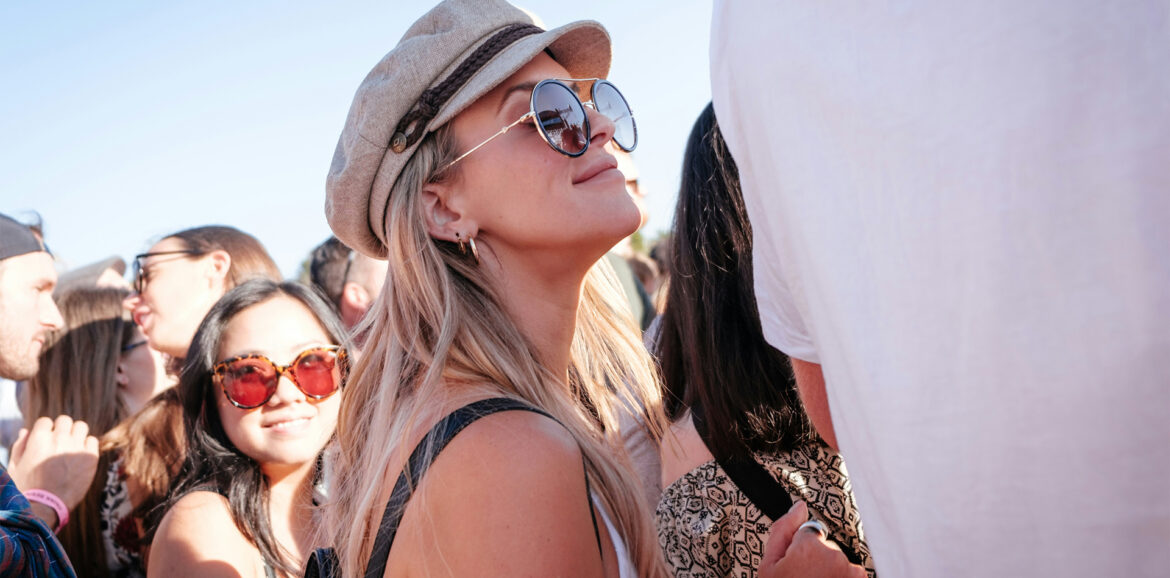Sunscreen? We apply it en masse. As soon as the first sun rays show up, we pull out the bottles. We know: the sun is wonderful, but also harmful. So we protect our skin, preventively and as a matter of course. But why don’t we do the same with our hearing?
Hearing protection is at least as important as sunscreen – and perhaps even more important. Because where burnt skin usually recovers within a few days, hearing damage is often permanent.
In this blog, read why it’s time to make hearing protection as normal as rubbing in.
Invisible damage
What sunburn and hearing damage have in common is that you don’t notice the damage until it’s actually too late. Too long in the sun without protection leads to redness, pain or in the worst case: skin cancer. Too long in loud or prolonged noise without protection causes hearing damage, tinnitus (ringing in the ears) or hypersensitivity to sound(hyperacusis).
The difference? Burned skin you see. Hearing damage doesn’t. That makes it more elusive AND more insidious.
Hearing: a sense you can’t fix
Your skin is constantly renewing itself. Even if you get burned once, the skin can recover (though repeated damage remains risky, of course). But your auditory nerves? Those don’t recover. Damaged cilia in the inner ear don’t grow back. And so hearing damage is usually permanent.
That’s why prevention is so important. Just as you grease yourself to prevent sunburn, you should protect your ears before damage occurs.
Sound is everywhere – even when you don’t expect it
Sunlight can be felt on your skin. You notice it immediately when you burn. Sound, on the other hand, is less tangible. You don’t feel it, you don’t see it. Yet the effect can be just as destructive.
Loud music at a festival, an evening at the pub, the popping of fireworks, a sports game, the noise of a motorcycle ride or even the piercing sound of a vacuum cleaner or leaf blower – your hearing often gets a harder time than you think.
And as with the sun, it’s the dose that counts. Not lying in the sun for an hour once or going to a concert, but repeated exposure without protection – that causes damage.
But … Isn’t hearing protection uncomfortable?
Let’s face it: people often say the same thing about sunscreen. “Sticky,” “white streaks,” “always forget about it.” Yet we do it, because we know the risks.
The same goes for hearing protection. Yes, earplugs should fit well. Yes, they can take getting used to. But there’s something for everyone these days: from universal music earplugs to custom-made hearing protectors, with filters that let your music or ambient noise through just fine, but dampen harmful spikes.
Well-fitting hearing protection feels comfortable, is barely visible and allows you to simply enjoy sound – without the adverse effects.
What is actually too loud?
Just a comparison, based on decibels (dB), the unit used to measure sound intensity:
- Normal conversation: 60 dB
- Busy street: 70-85 dB
- Music festival/concert: 95-110 dB
- Fireworks bang: up to 150 dB
Anything above 80 dB is harmful in the long term, especially with prolonged exposure. And from 100 dB, even a few minutes (!) without protection can be enough to cause permanent damage.
Compare it to a sun strength of 8 on a summer afternoon. You’d be crazy not to apply sunscreen – so why leave your ears unprotected?
It is not an “old people’s problem”
Another persistent misconception is that hearing damage is only something for the elderly. Incorrect. More and more young people are experiencing hearing problems precisely because of the excessive noise in their daily lives: music through earbuds, festivals, going to clubs, podcasts at maximum volume.
The WHO (World Health Organization) even warns that more than 1 billion young people are at risk of hearing damage due to unsafe listening behavior. So prevention does not start only at 60 – but much earlier.
Hearing protection is as responsible as sunscreen
Greasing is now well established. In schools, at sports clubs, at campsites: everywhere children are urged to grease themselves. There are even sunburn posts on the beach. We understand the importance of skin protection.
It’s time to make hearing protection just as natural. A set of earplugs in your bag, just like you carry sunscreen. Getting kids used to hearing protection at festivals or fireworks. Making young people aware of safe listening habits. And above all: normalize the conversation about it.
Tips to better protect your hearing
Want to make hearing protection part of your daily habits? Then here are some tips:
- Invest in good earplugs. Rather than foam plugs from the hardware store, prefer special hearing protection with music filters or custom-made ones.
- Use volume limiters. Many smartphones have settings that allow you to limit the maximum volume.
- Give your ears a rest. After a loud event, your ears need time to recover. Silence is golden then.
- Encourage protection in children. Start young. Hearing protection for children comes in fun colors and is tailored to small ears.
- Make it normal. Talk about it with friends or family. Like lubrication, this should also be discussed.
In conclusion
Sun damage and hearing damage may seem like completely different things – but they have more in common than you think. Both are often irreversible, both start out subtle, and for both, prevention is better than cure.
So: put standard earplugs in your bag, as well as sunscreen. Because your hearing is just as vulnerable as your skin. And just as valuable.
Want to know which hearing protection suits you best? In our webshop you will find a wide range of hearing protection: for festivals, work, travel, sleep, children and much more. Safe, comfortable and often barely visible.
Have any questions? We’re happy to help.








